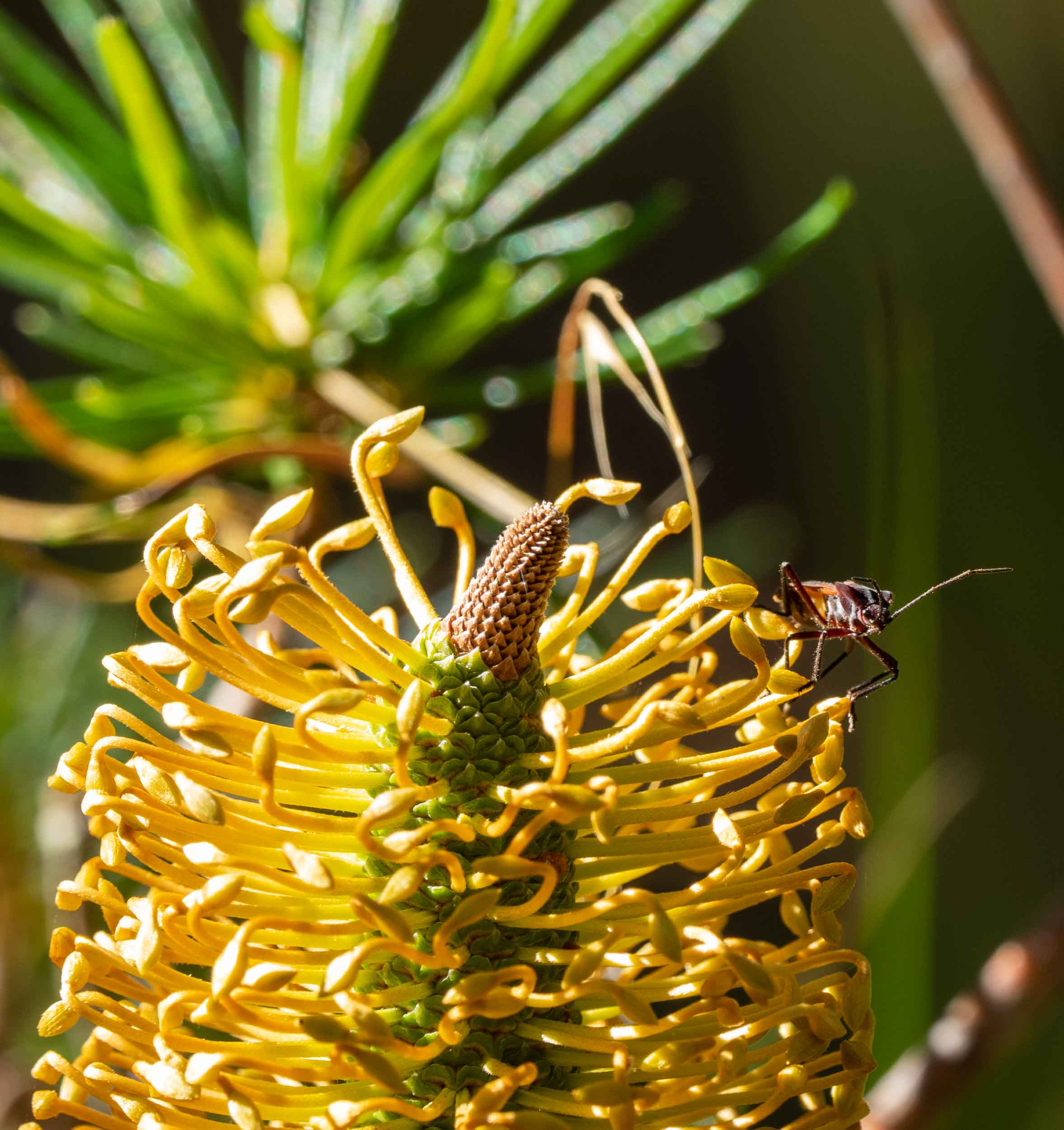spinulosa & spinebills

There is very little flowering in the forest right now. Autumn is always rather lean, it's weeks since the last decent rain, and many plants are struggling.
Yet one Banksia species is putting on a show.
Banksia spinulosa is typically a low shrub, and it doesn't thrive in our local forest. There are just 4-5 plants across 4 hectares, and none appear to be particularly vigorous.
However, Autumn is peak flowering time for B. spinulosa. One plant has produced several flower spikes and the older flowers are beginning to open.
I was bug-watching this one bush yesterday ... (as you do!) ... when my stake-out was interrupted by a honeyeater.
We are regularly treated to the sight of Eastern Spinebills feeding close to the ground. They seem particularly fond of Epacris, but we have also noted the attention they pay to the Banksia.
Epacris is really suffering right now. Last week a botanist friend commented that the Epacris he's been monitoring are forming flower buds, but dropping them soon after. We assume it is the drought.
This male made several trips to the Banksia, and always to the same flower spike.
Nectar is produced at the base of the tiny, individual flowers. The 'spine bill' and long tongue are put to good use. Despite the birds' reach, the plant does succeed in dumping large amounts of pollen on his head!
Chance encounters like this always prompt me to try to learn a bit more. What is known about the relationship between these species? Quite a lot, it turns out!
Research in the forests around Armidale, NSW, examined the relationship between the migration and feeding of Eastern Spinebills, and the flowering of Banksia spinulosa*. Their local B. spinulosa is a distinct sub-species, but it is reasonable to assume that the fundamental biology is the same across the species. I found the following points of particular interest:
B. spinulosa is a nectar fountain
These flower spikes produce twice as much nectar per day as the familiar coastal banksia, B. integrifolia. The flowers may actually drip nectar early in the day!
Eastern Spinebills get fat during Winter
In June, both male and female birds are 15% above their average weight. They spend half their feeding time taking nectar. The remainder is spent chasing insects, particularly flies and small wasps and bees.
Insects provide protein for raising their chicks
Most of the birds' energy comes from nectar. They take insects for protein. In particular, they feed their growing young on small flies. And to catch flies on the wing, takes a lot of energy ... which means they need a lot of nectar! Breeding season starts in August.
Some birds are resident, but most are visitors
Eastern Spinebill numbers are low during Summer, at least in the forests around Armidale. The population swells during Winter, and many of these visitors hang around for a while. Their arrival coincides with the flowering of the banksia. This made me wonder about ours ...
Our own home records confirm that we see Eastern Spinebills all year. It may be that we don't have the same influx of visiting birds because B. spinulosa is not a dominant species here. But that is just an idea.
Banksia is in the family Proteaceae. They have highly specialised floral structure. Paul described this in detail in an earlier post, Summer flowering of Proteaceae.
*Ford, H.A. & Pursey, J.F. 1982. Status and feeding of the Eastern Spinebill Acanthorhynchus tenuirostris at New England National Park, North-eastern NSW. Emu - Austral Ornithology, 82:4, 203-211.












